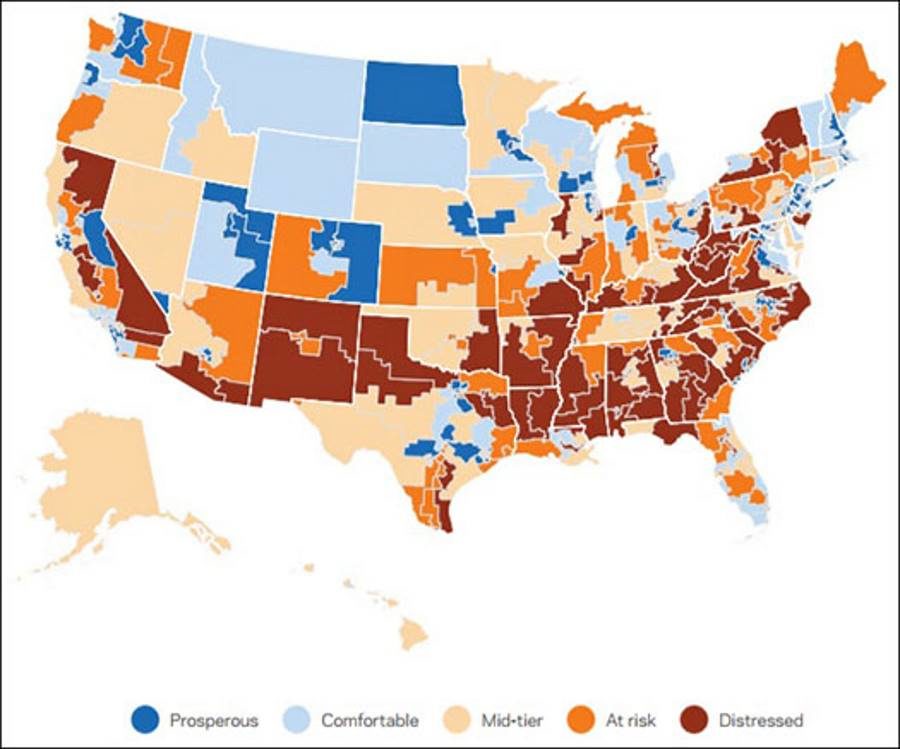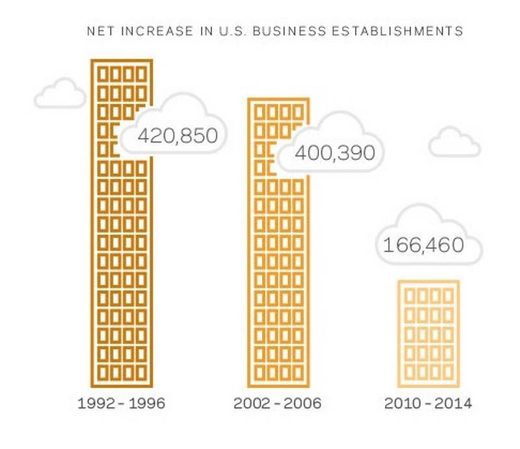The new research comes from the Economic Innovation Group (EIG), a bipartisan public policy organization funded by successful tech entrepreneurs. The study provides detailed data on the economically distressed communities that have fundamentally changed the economic landscape of America. The authors write:
"A remarkably small proportion of places fuel national increases in jobs and businesses in today's economy. High growth in these local economic powerhouses buoys national numbers while obscuring stagnant or declining economic activity in other parts of the country. EIG's prior work shows that this trend represents a fundamental shift in the geography of economic growth in the United States. Geographic disparities have, of course, always existed in this country, but the prospects of different communities used to rise or fall together to a far greater extent than they do today. Now, national statistics are often far removed from the experience of the typical American community."Some of the key findings from the groundbreaking study are the following:
- 53 million individuals (one in six Americans) live in economically distressed zip codes;
- Prosperous zip codes are home to 84.8 million people, more than any other of the five tiers of communities;
- More than half of the country's population living in distressed zip codes resides in the South;
- A quarter of the distressed population is under 18 years of age, meaning roughly 13 million American children are growing up in communities likely to have deeply negative "neighborhood effects" on young people's future earnings potential;
- In the average distressed zip code, more than a quarter of the population lives in poverty, and over 40 percent of prime-age adults are missing from the workforce;
- The prime years of the national economic recovery bypassed many of America's most vulnerable places altogether. Far from achieving even anemic growth from 2011 to 2015, distressed communities instead experienced what amounts to a deep ongoing recession, with a 6.0 percent average decline in employment and a 6.3 percent average drop in business establishments;
- 58 percent of adults in distressed zip codes have no education beyond high school.
Read the rest here





Reader Comments